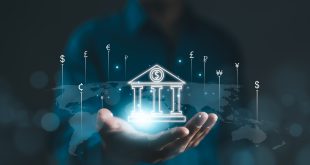The U.S. dollar held close to its highest levels in over two months on Tuesday, buoyed by expectations that the Federal Reserve will adopt a more cautious approach to rate cuts in the near term. Traders have dialed back predictions of large rate cuts following a series of robust U.S. economic data and slightly higher-than-expected inflation in September, which suggested the economy remains resilient.
The Fed, which kicked off its easing cycle with a 50 basis point cut in September, is now expected to slow its pace of rate reductions. Market participants are currently pricing in an 89% chance of a 25 bps rate cut in November, with a total of 45 bps of easing anticipated for the year.
The dollar index, which measures the U.S. currency against a basket of six major rivals, stood at 103.19, just below the two-month peak of 103.36 reached on Monday. This resurgence was driven by remarks from Federal Reserve Governor Christopher Waller, who urged “more caution” on rate cuts moving forward.
Euro and Pound Struggle Amid Rate Cut Expectations
The euro hit its lowest point since August, trading at $1.0885, as investors anticipated the European Central Bank’s (ECB) policy meeting on Thursday. The ECB is expected to deliver a consecutive rate cut, a decision that was not widely predicted at the bank’s last meeting in September. The euro has been under pressure as traders price in a further loosening of monetary policy in the eurozone.
Similarly, the British pound slipped to $1.3075 after U.K. labor market data showed that wage growth in the three months leading to August had slowed to its weakest pace in over two years. This has paved the way for the Bank of England (BoE) to consider a rate cut next month. The pound had previously been supported by expectations of sticky inflation keeping the BoE on a gradual rate cut path, but shifting market sentiment has caused the currency to drop more than 2% against the dollar this month.
Yen Weakness Persists Amid BoJ Uncertainty
The yen’s decline slowed slightly, trading at 149.07 per dollar, having dropped as low as 149.98 on Monday—its weakest level since August. A dovish shift from Bank of Japan (BoJ) Governor Kazuo Ueda, coupled with opposition to further rate hikes by Japan’s new Prime Minister Shigeru Ishiba, has cast doubt on the likelihood of additional rate hikes in Japan. Economists are increasingly uncertain about whether the BoJ will tighten policy again this year, with only a slim majority expecting further action.
Oil-Linked Currencies Slip Amid Easing Middle East Tensions
Currencies tied to oil exports weakened as crude prices fell sharply. Reports suggesting that Israel is not planning to strike Iranian oil infrastructure helped ease concerns over potential supply disruptions in the Middle East, which had supported oil prices in recent weeks. This decline in crude prices has put additional pressure on oil-exporting currencies.
 Noor Trends News, Technical Analysis, Educational Tools and Recommendations
Noor Trends News, Technical Analysis, Educational Tools and Recommendations





